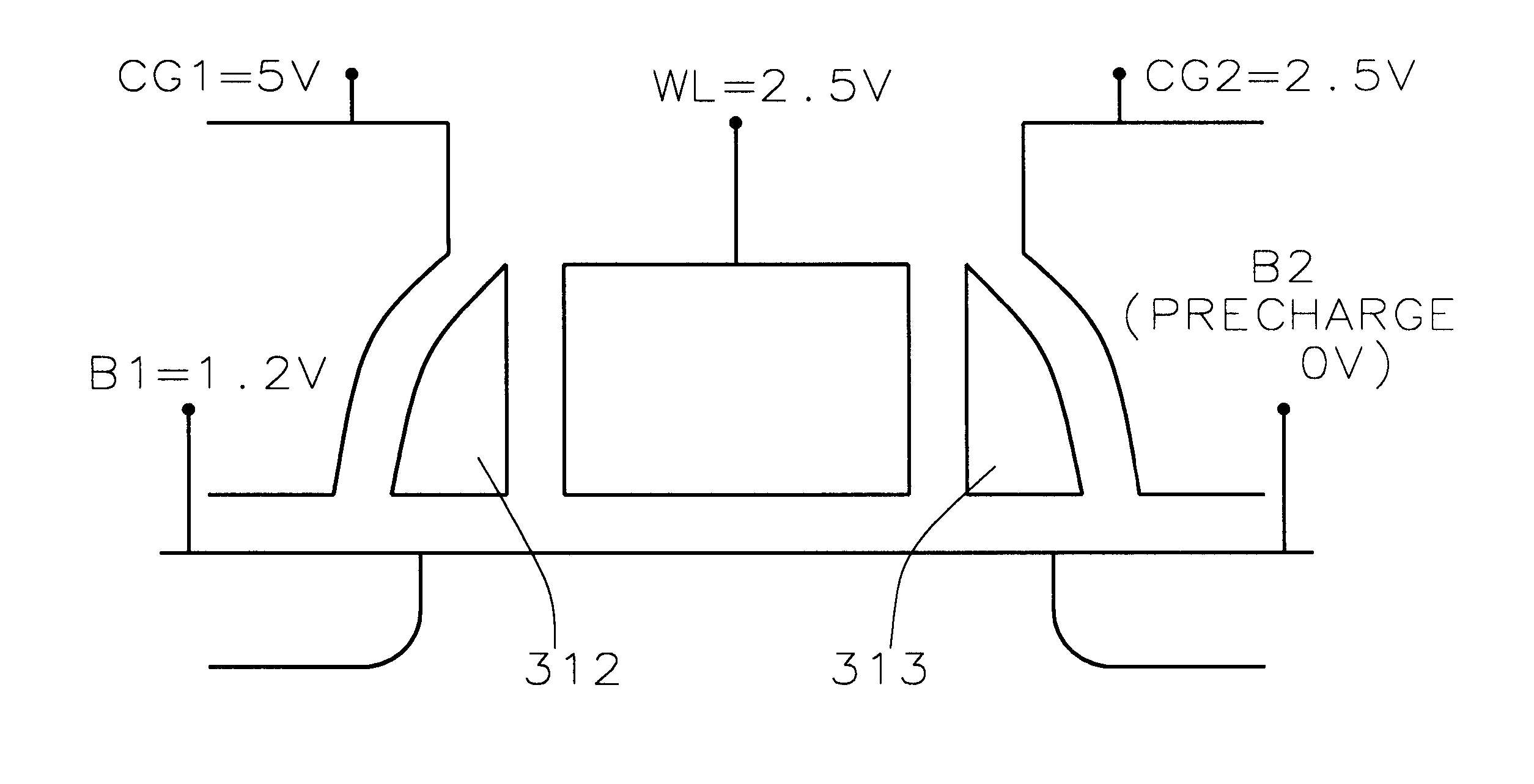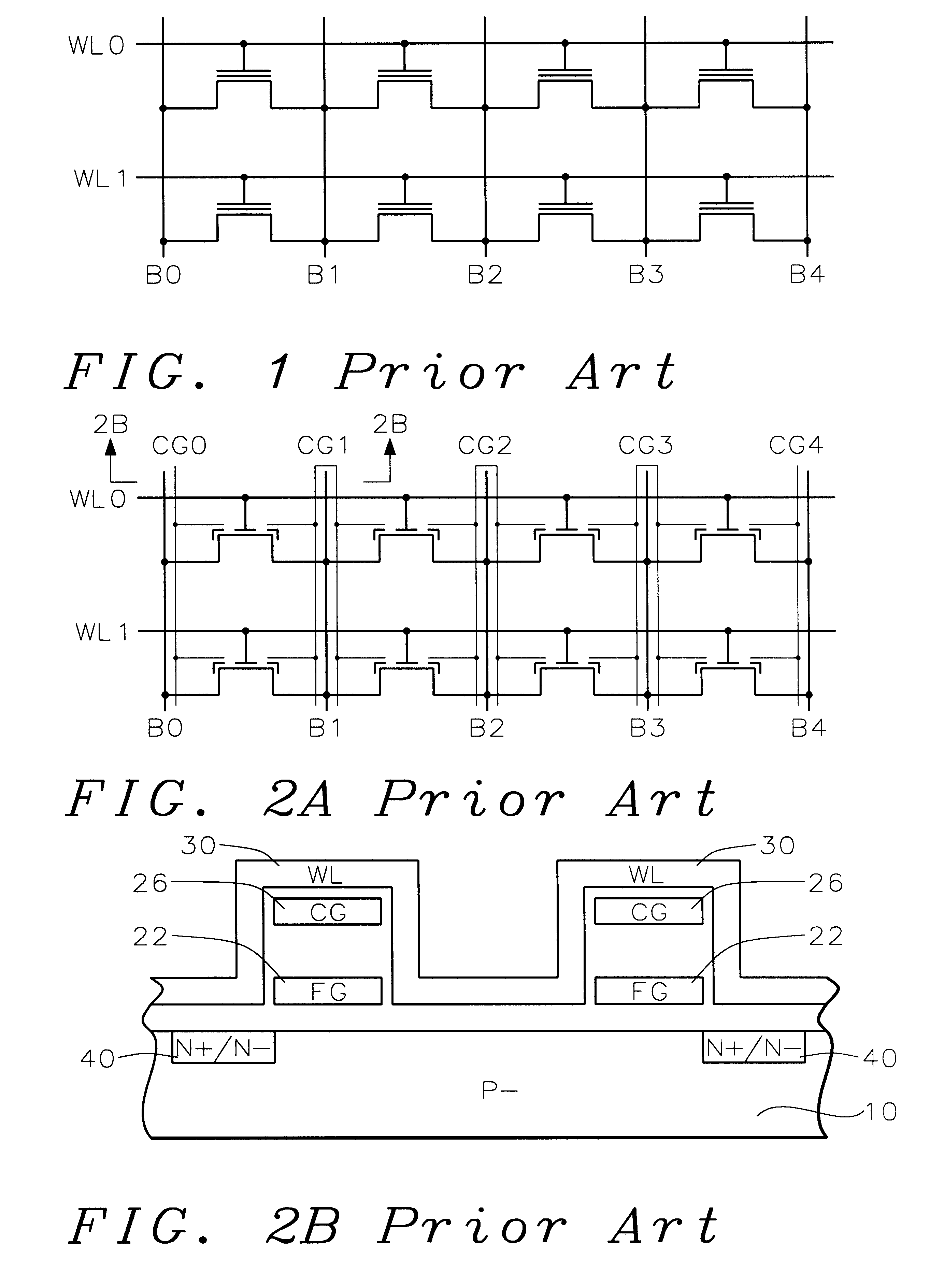Process for making and programming and operating a dual-bit multi-level ballistic flash memory
a ballistic flash memory and multi-level technology, applied in the field of high-density flash memory arrays, can solve the problems of high program voltage of about 12v, interference with bit line signals, and inability to detect multi-level thresholds,
- Summary
- Abstract
- Description
- Claims
- Application Information
AI Technical Summary
Benefits of technology
Problems solved by technology
Method used
Image
Examples
Embodiment Construction
Read operation for a two bit multi-level storage in each of the floating gates will be described, based on simulations for a 0.25.mu. process. FIG. 7A illustrates the memory cell and voltage conditions for a read of floating gate 313. The threshold voltages for the four levels of storage are 0.8V, 1.2V, 1.6V, and 2.0V for the "11", "10", "01", and "00" states, respectively. This is shown in FIG. 7B. The threshold voltage for the word select gate is 0.5V. The capacitance coupling ratios between the control gate to floating gate, word gate to floating gate, and drain to floating gate are 0.55 , 0.30 and 0.15, respectively. During read, the source voltage is fixed to 1.2V. The control gate associated with the unselected floating gate is set to 5V, and the control gate associated with the selected floating gate is set to 2.5V. All other control gates are set to zero, and the bit junction is precharged to zero.
When the word line is raised from 0V to 2.5V, based on the capacitance couplin...
PUM
 Login to View More
Login to View More Abstract
Description
Claims
Application Information
 Login to View More
Login to View More - R&D
- Intellectual Property
- Life Sciences
- Materials
- Tech Scout
- Unparalleled Data Quality
- Higher Quality Content
- 60% Fewer Hallucinations
Browse by: Latest US Patents, China's latest patents, Technical Efficacy Thesaurus, Application Domain, Technology Topic, Popular Technical Reports.
© 2025 PatSnap. All rights reserved.Legal|Privacy policy|Modern Slavery Act Transparency Statement|Sitemap|About US| Contact US: help@patsnap.com



